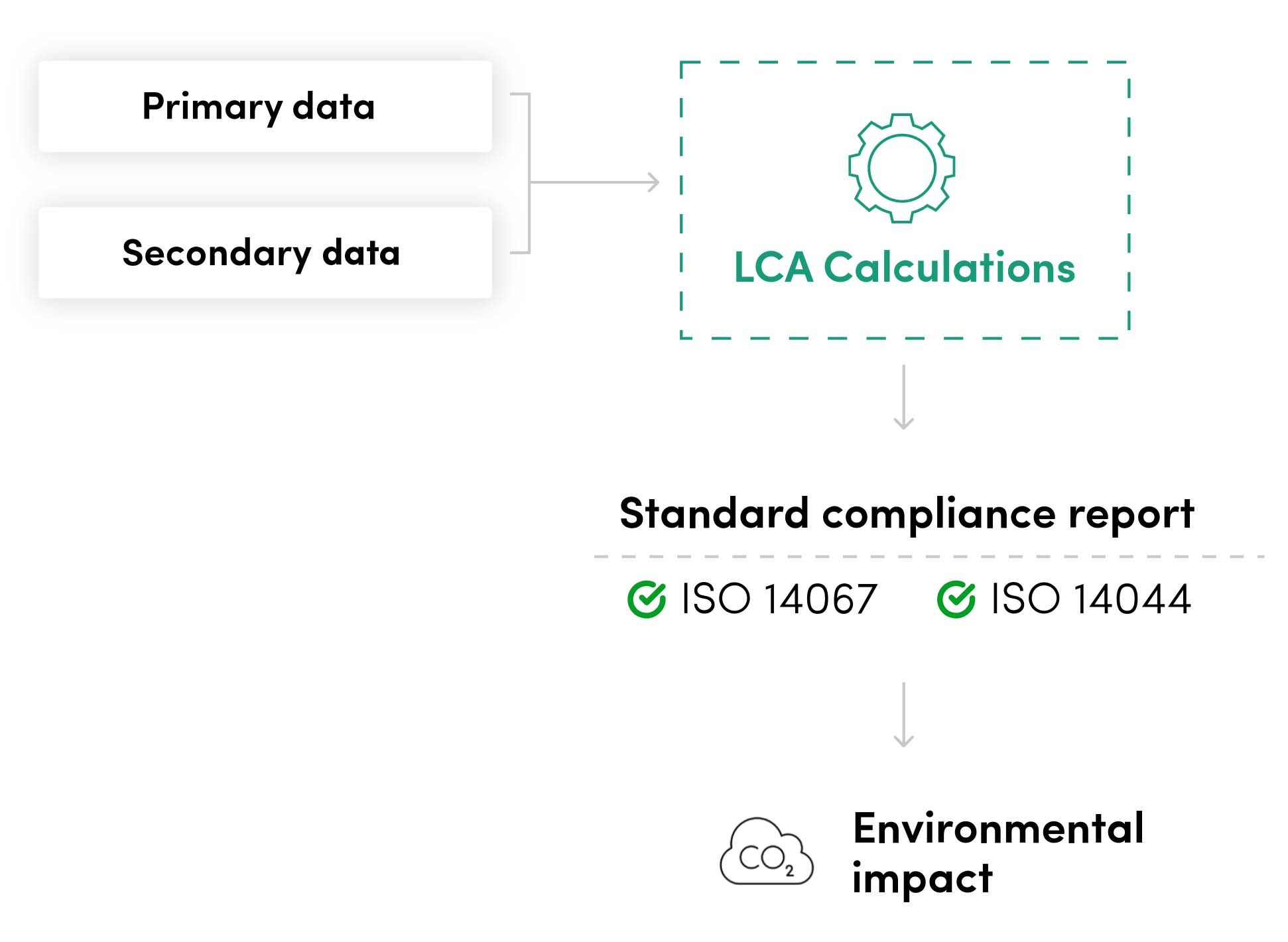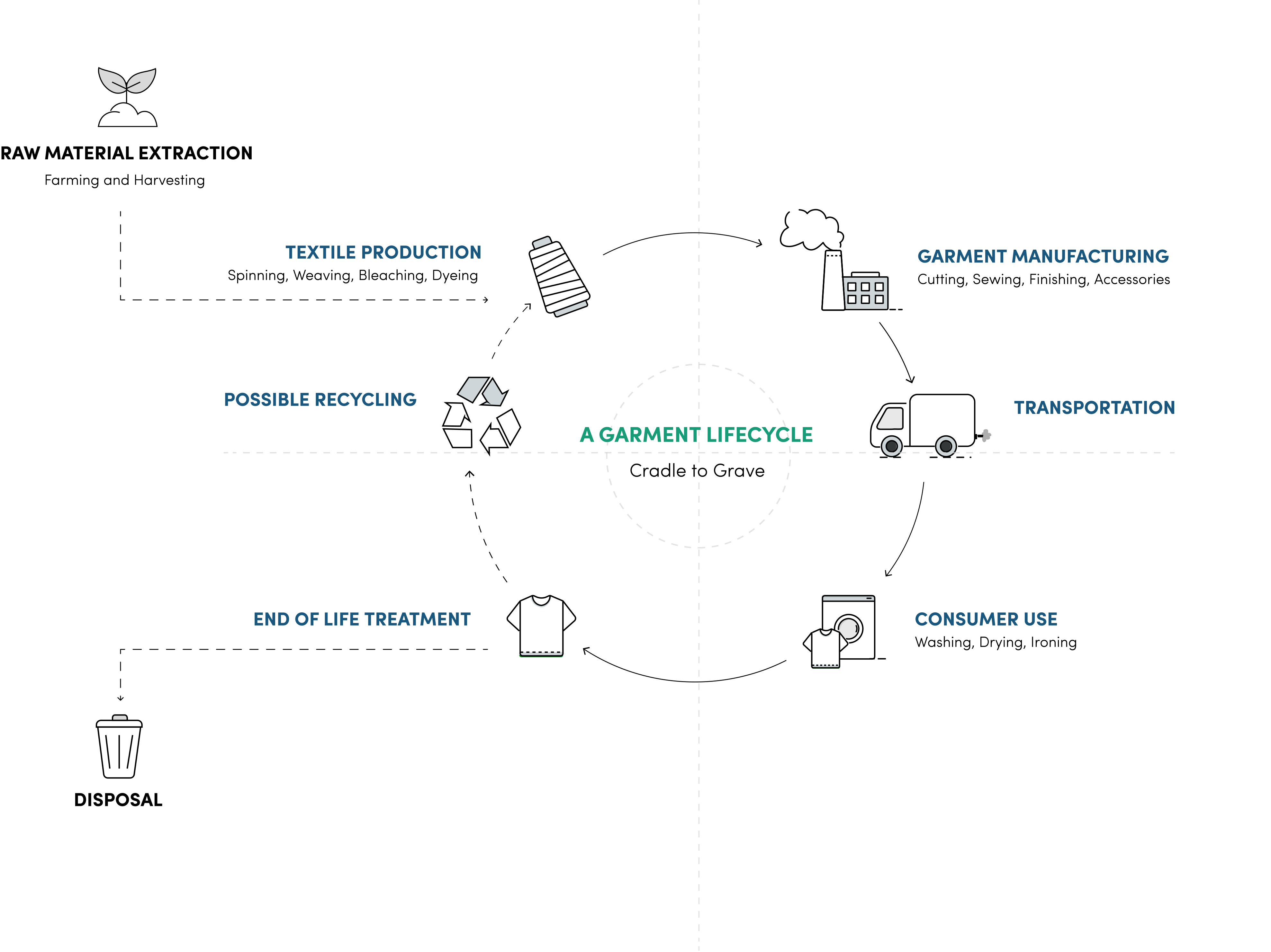Understanding a Life Cycle Assessment
Life Cycle Assessment (LCA), often referred to as environmental LCA, is an internationally recognised and widely used methodology to evaluate the environmental impacts of a product. It allows objective and scientific evaluation of the resource requirements of a product and its potential impact on the environment during every phase of its life cycle, starting at raw material extraction.


To understand how LCA works within the fashion industry, we first need to understand the various life cycle stages of a typical garment. This traces a product’s journey at various stages of its supply chain. As a network of a company and its many suppliers, supply chains in the fashion industry can be complex and have multiple tiers depending on the material, trims and finishing processes used to create an item.
What does the product life cycle involve for a fashion item?
1Fibre production
This process covers the extraction and processing of fibres, including all sub-processes such as the cultivation of crops, scutching, degumming and gunning. The processes depend on the type of fibres.
2Yarn manufacturing
This includes the spinning of yarn of either filament or staple fibres. It includes all related processes such as carding, combing, roving and spinning for natural/cellulosic fibres and melt/dry/wet spinning processes for synthetic fibres.
3Fabric manufacturing
This process covers the knitting or weaving of yarn into fabric and considers all sub-processes of winding, warping and sizing.
4Dyeing and finishing
This includes the scouring, bleaching, dyeing, and fabric finishing processes. It also includes sub-processes such as water softening and wastewater treatments.
5Assembly
Covers the cutting and sewing of fabric into apparel products. It includes steaming and ironing of clothes and packaging.
6Distribution
This process considers the transportation from the assembly location to warehouse/store and from warehouse/store to end-users.
7Consumption
The use phase of apparel includes laundering, drying, ironing and wearing.
8End-of-life
Involves the collection and management of apparel products at the end of their use phase (reuse, recycling, upcycling, incineration and landfilling).
What is LCA exactly?
LCAs help us to quantify the resources used in the creation of a product. This includes energy, water, chemicals and auxiliaries. It evaluates the raw materials used, production and assembly inputs, and transportation impact through to product use like laundering and end-of-life phases. End-of-life phases include the environmental impact of reuse, recycling and disposal.
Collecting data for LCA’s can be complex, time consuming and lack standardisation. This can make it hard to understand the true impact of your product. This is because production processes and supply chains vary considerably depending on geography, materials, technological processes and supplier-base. Typically, brands with work production partners and suppliers to gather first-hand data on fabrics used in their clothing. To do so effectively requires that the entire supply chain of a company is mapped correctly - this is why transparency and traceability is so crucial. If this data is unavailable, brands may use secondary data from Life Cycle Inventory (LCI) databases such as GaBi and Ecoinvent that can help fill in any gaps.
The level of accuracy and the quality of data collection can significantly influence the LCA analysis and results. That is why we care about using trustworthy credible, verifiable data at Green Story.
Start supercharging your green claims today